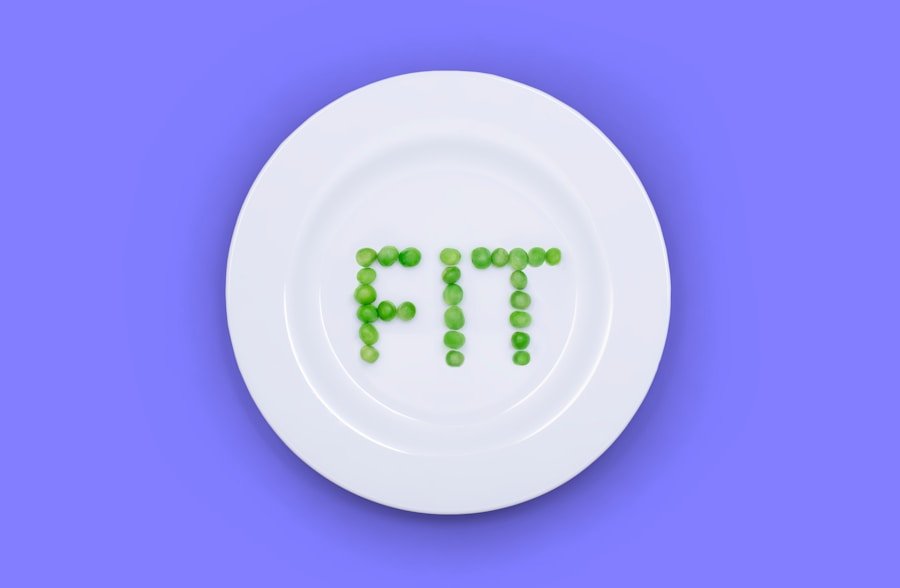Belly fat, often referred to as visceral fat, is not merely an aesthetic concern; it poses significant health risks that can lead to serious medical conditions. Unlike subcutaneous fat, which lies just beneath the skin, visceral fat is located deeper within the abdominal cavity, surrounding vital organs such as the liver, pancreas, and intestines. This type of fat is metabolically active and can release inflammatory markers and hormones that disrupt normal bodily functions.
Research has shown that excess belly fat is linked to a higher risk of developing chronic diseases, including type 2 diabetes, heart disease, and certain cancers. The presence of visceral fat can lead to insulin resistance, which is a precursor to diabetes, and can also contribute to the development of cardiovascular issues by increasing blood pressure and cholesterol levels. Moreover, the psychological implications of carrying excess belly fat cannot be overlooked.
Individuals with higher levels of abdominal fat often experience lower self-esteem and body image issues, which can lead to mental health challenges such as anxiety and depression. The societal pressures to conform to certain body standards exacerbate these feelings, creating a cycle of emotional distress that can further complicate weight management efforts. Understanding the multifaceted dangers of belly fat is crucial for motivating individuals to adopt healthier lifestyle choices that can mitigate these risks and promote overall well-being.
Key Takeaways
- Belly fat is not just a cosmetic issue, it can also lead to serious health problems such as heart disease and diabetes.
- Fiber-rich foods can help with weight management and reducing belly fat by promoting feelings of fullness and aiding digestion.
- Protein is essential for building and repairing tissues, and can also help with weight loss by increasing metabolism and reducing appetite.
- Healthy fats, such as those found in avocados and nuts, can help reduce belly fat and lower the risk of heart disease.
- Lean meats and plant-based proteins are important for building and maintaining muscle mass, which can help with weight management and reducing belly fat.
Incorporating Fiber-Rich Foods into Your Diet
Fiber plays a pivotal role in weight management and overall health, particularly when it comes to reducing belly fat. Foods high in fiber, such as fruits, vegetables, legumes, and whole grains, contribute to a feeling of fullness, which can help curb overeating. Soluble fiber, in particular, has been shown to be effective in reducing visceral fat.
It dissolves in water to form a gel-like substance that slows digestion and absorption of nutrients, leading to more stable blood sugar levels.
Incorporating fiber-rich foods into your diet can be both enjoyable and beneficial.
For instance, starting your day with a bowl of oatmeal topped with fresh berries not only provides a hearty breakfast but also packs a significant fiber punch. Legumes such as lentils and chickpeas can be added to salads or soups for an extra boost of fiber while enhancing the meal’s nutritional profile. Additionally, snacking on raw vegetables or fruits like apples and pears can satisfy cravings while contributing to your daily fiber intake.
By making a conscious effort to include more fiber-rich foods in your meals, you can create a sustainable approach to managing belly fat and improving overall health.
The Power of Protein in Fighting Belly Fat

Protein is often hailed as a key player in weight loss strategies, particularly when it comes to targeting stubborn belly fat. Consuming adequate amounts of protein can enhance feelings of satiety, which helps reduce overall calorie intake. Studies have demonstrated that diets high in protein can lead to greater reductions in body fat compared to lower-protein diets.
This is partly due to the thermic effect of food; protein requires more energy for digestion compared to fats and carbohydrates, resulting in increased calorie expenditure. Incorporating a variety of protein sources into your diet can further amplify its benefits. Lean meats such as chicken breast and turkey are excellent options for those who consume animal products.
For vegetarians or vegans, plant-based proteins like quinoa, tofu, and tempeh provide essential amino acids while being lower in saturated fats. Additionally, incorporating protein-rich snacks like Greek yogurt or cottage cheese can help maintain muscle mass during weight loss efforts. Maintaining muscle is crucial because it contributes to a higher resting metabolic rate, meaning you burn more calories even at rest.
By prioritizing protein in your meals and snacks, you can effectively combat belly fat while supporting overall health.
Embracing Healthy Fats for a Flatter Stomach
| Healthy Fats | Benefits |
|---|---|
| Avocado | Rich in monounsaturated fats, fiber, and potassium |
| Salmon | High in omega-3 fatty acids, protein, and vitamin D |
| Olive Oil | Contains antioxidants and monounsaturated fats |
| Nuts and Seeds | Good source of healthy fats, protein, and fiber |
Contrary to popular belief, not all fats are detrimental to health; in fact, healthy fats are essential for maintaining a balanced diet and can even aid in reducing belly fat. Unsaturated fats found in foods like avocados, nuts, seeds, and olive oil provide numerous health benefits while promoting satiety. These fats help regulate hormones that control appetite and metabolism, making them an important component of any weight loss strategy.
Furthermore, healthy fats are crucial for nutrient absorption; many vitamins are fat-soluble and require dietary fats for optimal absorption. Incorporating healthy fats into your diet doesn’t mean indulging excessively; moderation is key. For example, drizzling olive oil over a salad or adding a handful of nuts to your morning oatmeal can enhance flavor while providing essential nutrients.
Avocados are another versatile option; they can be spread on whole-grain toast or blended into smoothies for added creaminess without the unhealthy saturated fats found in many processed foods. By consciously choosing healthy fats over unhealthy trans fats or saturated fats found in fried foods and processed snacks, you can support your body’s functions while working towards a flatter stomach.
The Role of Lean Meats and Plant-Based Proteins
When it comes to fighting belly fat, the choice of protein sources plays a significant role in shaping dietary habits and health outcomes. Lean meats such as chicken breast, turkey, and fish are excellent sources of high-quality protein that can help build muscle while minimizing excess calorie intake from fats. Fish varieties rich in omega-3 fatty acids, such as salmon and mackerel, not only provide protein but also offer anti-inflammatory benefits that may aid in reducing visceral fat accumulation.
On the other hand, plant-based proteins have gained popularity for their health benefits and sustainability factors. Foods like lentils, beans, chickpeas, and edamame are not only rich in protein but also packed with fiber, which enhances satiety and aids digestion. Incorporating these plant-based options into your meals can diversify your diet while providing essential nutrients without the added saturated fats often found in animal products.
For instance, a hearty lentil stew or a chickpea salad can serve as satisfying main dishes that contribute to your protein intake while promoting overall health.
Utilizing Whole Grains for a Slimmer Waistline

Whole grains are an integral part of a balanced diet that supports weight management and overall health.
Consuming whole grains has been associated with lower levels of belly fat due to their ability to promote satiety and stabilize blood sugar levels.
Incorporating whole grains into your meals can be both simple and delicious. Options such as quinoa, brown rice, barley, and whole wheat bread offer versatile bases for various dishes. For example, swapping white rice for quinoa not only adds more fiber but also increases protein content in your meal.
Whole grain pasta can be used in salads or paired with lean proteins for a satisfying dinner option. By making small changes to include whole grains in your diet regularly, you can support your efforts toward achieving a slimmer waistline while enjoying flavorful meals.
Harnessing the Benefits of Fruits and Vegetables
Fruits and vegetables are cornerstones of any healthy diet and play a crucial role in combating belly fat. Rich in vitamins, minerals, antioxidants, and dietary fiber, these foods provide essential nutrients without adding excessive calories. The high water content found in many fruits and vegetables also contributes to hydration while promoting feelings of fullness.
This makes them ideal choices for snacking or incorporating into meals throughout the day. Incorporating a variety of colorful fruits and vegetables into your diet not only enhances nutritional value but also adds visual appeal to your meals. For instance, a vibrant salad filled with leafy greens, cherry tomatoes, cucumbers, bell peppers, and topped with berries offers a plethora of nutrients while being low in calories.
Smoothies made with spinach or kale blended with fruits like bananas or berries provide an easy way to consume multiple servings of produce at once. By prioritizing fruits and vegetables in your daily meals and snacks, you can effectively support your weight loss goals while reaping the numerous health benefits they offer.
Hydration and its Impact on Belly Fat
Hydration is often an overlooked aspect of weight management; however, it plays a vital role in overall health and can significantly impact belly fat reduction efforts. Water is essential for various bodily functions including digestion, metabolism, and nutrient absorption. Staying adequately hydrated helps maintain optimal metabolic rates; even mild dehydration can slow down metabolism and hinder weight loss efforts.
Moreover, drinking water before meals has been shown to promote feelings of fullness, which may lead to reduced calorie intake during meals. Replacing sugary beverages with water not only cuts down on empty calories but also helps prevent insulin spikes that contribute to fat storage around the abdomen. Infusing water with fruits or herbs can make hydration more enjoyable while providing additional nutrients without added sugars or calories.
By prioritizing hydration throughout the day—whether through water or hydrating foods—you can support your body’s natural processes while working towards reducing belly fat effectively.
If you’re looking to fight belly fat, incorporating belly fat fighting foods into your diet is essential. One related article you may find interesting is about drinks that can help you lose winter weight. According to Indiatimes, certain beverages can aid in weight loss and help you shed those extra pounds. By combining these drinks with a diet rich in belly fat fighting foods, you can work towards achieving your weight loss goals.
FAQs
What are belly fat fighting foods?
Belly fat fighting foods are foods that are known to help reduce belly fat and promote weight loss. These foods are typically low in calories, high in fiber, and have properties that help boost metabolism and reduce inflammation.
What are some examples of belly fat fighting foods?
Some examples of belly fat fighting foods include avocados, berries, leafy greens, nuts and seeds, fatty fish, whole grains, and lean protein sources like chicken and turkey.
How do belly fat fighting foods help reduce belly fat?
Belly fat fighting foods help reduce belly fat by promoting feelings of fullness, increasing metabolism, reducing inflammation, and providing essential nutrients that support overall health and weight loss.
Can belly fat fighting foods be part of a balanced diet?
Yes, belly fat fighting foods can be part of a balanced diet when consumed in moderation as part of a well-rounded meal plan that includes a variety of nutrient-dense foods.
Are there any potential side effects of consuming belly fat fighting foods?
In general, there are no significant side effects of consuming belly fat fighting foods. However, some individuals may experience digestive discomfort or allergic reactions to certain foods, so it’s important to be mindful of any personal food sensitivities.